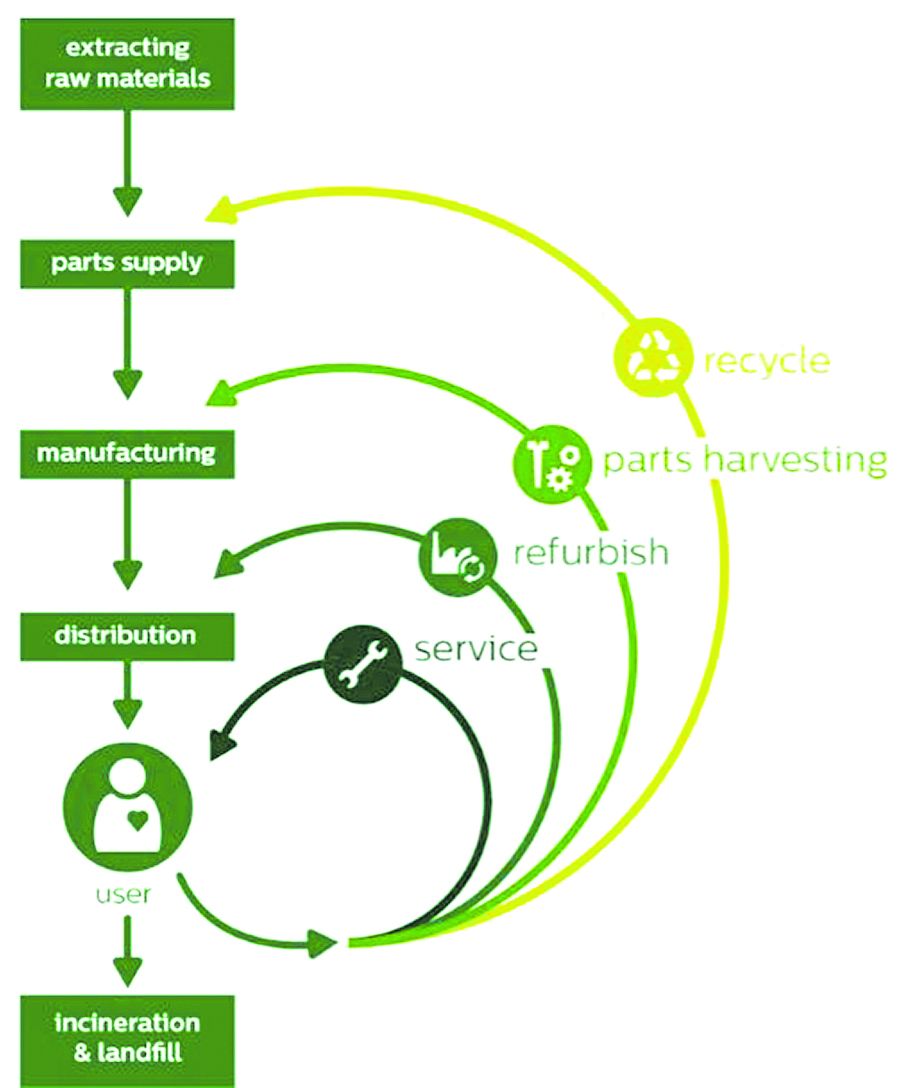By Alex Popp
Many green building programs put a heavy emphasis on not only the sustainability of a building once it is built, but increasingly so on the sourcing and management of building materials in an environmentally responsible way. Sustainable Supply Chain (SSC), sometimes referred to as “cradle-to-cradle,” is the standard term to reference this process. But what does that really mean?

Circular Sustainable Supply Chain Image via https://www.cerasis.com
What is a Sustainable Supply Chain?
SSC embodies a cyclical approach to manufacturing that considers both the recovery and reuse of materials. This supply chain’s reverse logistics strives to continually sustain itself by returning materials to the land in either a safe molecular form or by continually reusing those materials for future products. Fully developed SSC’s consider sustainability for every contributor at every step – from design to manufacture, transportation, and storage to eventual end-of-life with a goal of re-use, recycling, or low impact disposal. This forward-thinking perspective serves to reduce waste, promote ethical and socially beneficial manufacturing practices, minimize or eliminate adverse health impacts, and enable compliance with increasingly stringent regulations.
In addition to giving you the warm fuzzy feeling that comes with reducing the environmental impact of product manufacturing, utilizing Sustainable Supply Chain materials has several business benefits. For corporations, it can help generate positive environmental and social impacts, and improve brand reputation, affecting numerous positive outcomes from increased sales to lowering operational costs. It can also simplify compliance efforts and mitigate regulatory risk.
The Cost of Materials on a Macro Level
Unlike the conventional supply chains, the SSC has a broader view of the system that internalizes operational costs and ultimately converts them into sources of value. A simple example would be an internalized cost for deforestation for wood and paper-based products. Although a tree can be a renewable resource, the conventional method often results in deforestation, transforming our theoretically renewable resource into one that is not. By implementing a cost for deforestation, the renewability of trees as a resource can by maintained and the negative impacts on biodiversity can be mitigated. Internalized costs such as these are pertinent to closed loop mechanics.
The Challenges of Sustainable Supply Chain Adoption
Managing the Supply Chain
The success of the SSC and subsequent benefits are intrinsically rooted in effective management which can be complex to navigate. Companies must actively include suppliers and service providers in the “greenification” of the supply chain to improve sustainability. Participants of the SSC must also collaborate with one another to find better ways to address environmental degradation, rising energy and raw material prices, and discrepancies between labor/environmental standards in one country and legal and consumer expectation in another.
Developing Sustainable Supply Chain Standards
For SSCs to flourish, widely-recognized industry standards and programs must be adopted. There is a strong need to regulate the advertising, labeling, and promotion of genuine sustainable practices to differentiate them from the superficial and misleading promotion of falsely-labeled green products known as “greenwashing.”

Sustainable Supply Chain Labels and EcoLabels
Businesses must decide what practices to adopt and what sustainability certifications/labels to pursue. There are many certifications/labels/declarations to choose from, and many more being added each year. Businesses must consider cost, ROI, and credibility of the label. There are some existing recognized labels that are leading the way, such as Cradle to Cradle, Environmental Product Declaration (EPD), Carbon Trust Reduction Label (CTRL), and Fairtrade. While these labels and others are making strides in the right direction, labeling SSC products is challenged by the complex and large scope of factors. A comprehensive and all-encompassing labeling system remains to dominate the industry.
Redeveloping supply chain methodologies takes time. It is a complete paradigm shift that involves widespread collaboration, a reprioritization of values, and incentivizing responsible behaviors. Incorporating SSC’s is not associated exclusively with green building programs; however they are helping to lead the way in this shift by enforcing a reliable set of standards and increasing the visibility of responsible product sourcing and management. And just as many of the sustainable building practices became more widespread and eventually mainstreamed because of these programs, it is our hope that so too will Sustainable Supply Chains.
Alex Popp is a sustainability consultant for Steven Winter Associates, Inc.








Leave a Reply